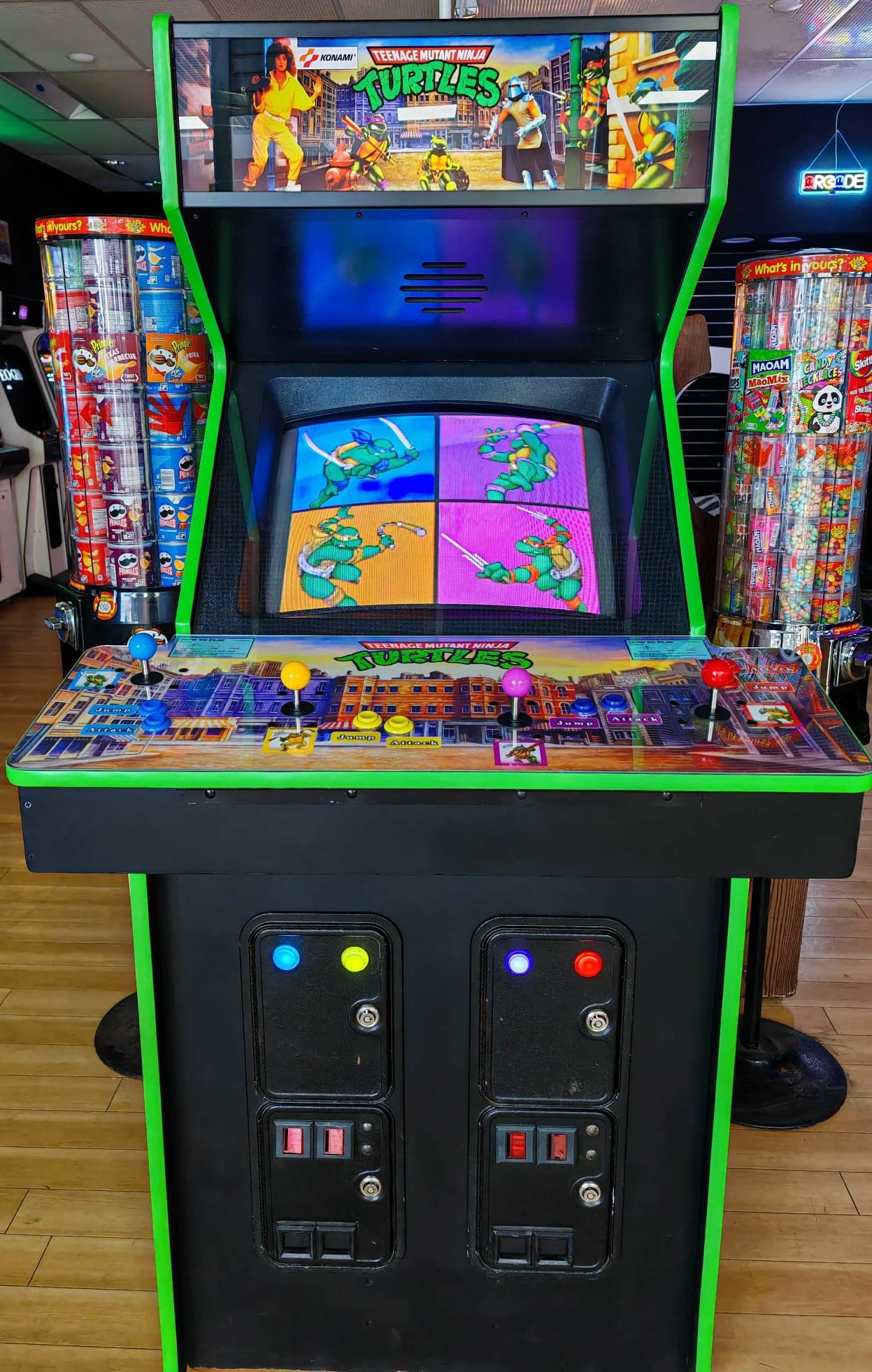Teenage Mutant Ninja Turtles
Teenage Mutant Ninja Turtles, known in Japan as Teenage Mutant Ninja Turtles: Super Kame Ninja and in the UK as Teenage Mutant Hero Turtles, hit the arcade scene in 1989, created and published by Konami. This beat 'em up game draws inspiration from the beloved Teenage Mutant Ninja Turtles franchise, which had just kicked off its animated series two years prior. Players can team up with up to three friends to take control of their favourite Ninja Turtles, battling through various levels against iconic foes like Shredder, Krang, and the Foot Clan.
The game was released at the peak of the Teenage Mutant Ninja Turtles' popularity and quickly became a massive hit worldwide. In fact, it was the highest-grossing dedicated arcade game in the United States in 1990, making it Konami's top arcade performer. A sequel, titled Teenage Mutant Ninja Turtles: Turtles in Time, arrived on the scene in 1991.
In this game, players can pick one of the four iconic Ninja Turtles: Leonardo, Michelangelo, Donatello, or Raphael. You select your character by using a specific coin slot (credit button on our machine). When the evil Shredder captures their friend April O'Neil and their mentor Splinter, the Turtles spring into action to rescue them and take down Shredder. Up to four players can join in the adventure and control any of the Turtles. Donatello may be slower in his attacks but boasts a longer reach, while Michelangelo and Raphael strike with speed at a shorter distance. Leonardo strikes a balance with his versatile combination of range and speed, making him a solid choice for any player.
The Turtles are controlled by eight-way joysticks and two buttons, jump and attack. If you want to strike, the attack button will perform a hit with whichever weapon your selected Turtle uses. The Turtles also have some cool special moves in their arsenal, like throwing Foot soldiers overhead! By combining the jump and attack buttons, Raphael rolls across the ground, finishing with a swift kick, while his brothers perform stylish sweeping jump attacks with their weapons. In certain spots, they can even spring off walls! To take down enemies faster, try slamming them into walls or other solid objects. There are plenty of items around, too, like traffic cones, parking meters, fire hydrants, and exploding oil drums that can be damaged or struck to take down foes nearby.
When the game is in attract mode, the game treats you to the first part of the cartoon opening along with a snippet of the iconic Teenage Mutant Ninja Turtles theme song.
The vast majority of enemies that the Turtles face are the Foot Soldiers, each one colour-coded to signify their unique attack patterns and preferred weapons. Foot Soldiers in purple and the Roadkill Rodney robots can grab the Turtles', holding them, and sap their health, leaving the player vulnerable to additional attacks from other enemies. The game features notable bosses such as Rocksteady and Bebop (initially faced separately in that order and later together), along with Baxter Stockman in his human form, Granitor, General Traag, Krang, and the notorious Shredder himself.
The arcade game took the scene by storm, especially in North America, where it became Konami's best-selling arcade title. Struggling to meet the soaring demand, Konami partnered with Dynamo Corp. to ramp up production in the U.S. The release of the Teenage Mutant Ninja Turtles film in March 1990 provided a significant boost to the arcade game's popularity as well. By early April 1990, Konami had successfully sold over 20,000 arcade cabinets globally, with more than 14,000 of those making their way into the U.S. market, marking it as the biggest arcade sensation since Double Dragon in 1987. By early May 1990, sales reached 25,000 cabinets in America and Europe, with production still underway to keep up with the insatiable demand.
In 1990, the Teenage Mutant Ninja Turtles arcade game dominated the RePlay charts in North America, maintaining its status as the top-grossing upright cabinet throughout the entire year. By the end of the year, it secured its place as the highest-grossing dedicated arcade game in the United States.
In Europe, the game also achieved remarkable success especially here in the UK, where it ranked among the top four highest-grossing arcade games in early 1990. In Australia, it set records as an arcade sensation in 1990, generating impressive earnings during its first six months on the market—a rarity for licensed arcade games, which often faded away after a few months. Teenage Mutant Ninja Turtles emulated this success in every region it was released in, and it still looks and plays as good today as it always has.


